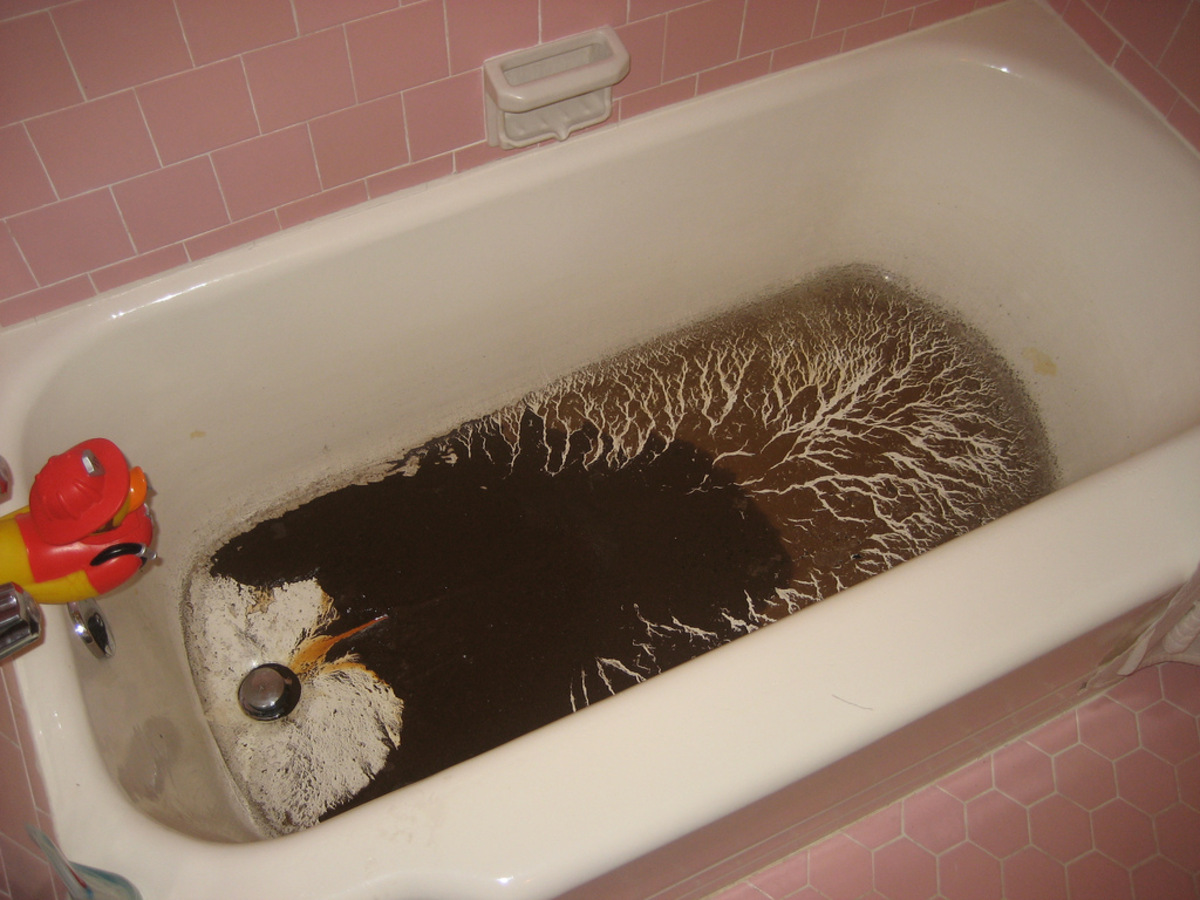Untangling the Mystery of Discharge in the Bathtub
Untangling the Mystery of Discharge in the Bathtub
Blog Article
On this page below you can discover some brilliant answers about What To Do If Sewage Starts Backing Up Into the Shower.

Sewer back-up in the bath tub can be a distressing and unhygienic problem for any kind of homeowner. Not just is it bothersome, but it additionally postures major wellness risks and shows underlying issues with the plumbing system. Recognizing why sewer is coming up with the bath tub is crucial for taking suitable action to resolve the issue successfully.
Introduction to the Issue
Recognizing the Trouble
When sewage starts backing up right into the bath tub, it's a clear sign of an issue with the drainage system. The wastewater that must be streaming away from your home is rather locating its way back into your living space, which can cause significant damage and health hazards.
Prospective Causes
Several elements can add to sewer back-up in the bathtub. From clogs in the sewage system line to issues with the plumbing infrastructure, recognizing the root cause is essential for locating a service.
Usual Reasons for Sewer Back-up
Obstructions in the Sewer Line
Among one of the most usual causes of sewer backup is a clog in the sewer line. This can take place because of the build-up of particles, oil, or foreign items in the pipes, stopping correct flow and creating sewage to support into your bathtub.
Tree Root Breach
Tree roots looking for dampness and nutrients can penetrate drain lines with little fractures or joints. With time, these origins can expand and increase, triggering significant damage to the pipes and leading to sewage back-up issues.
Aging Facilities
Older homes might have obsoleted plumbing systems that are a lot more prone to corrosion, fractures, and deterioration. As pipelines age, they become more vulnerable to leaks and blockages, enhancing the chance of sewage back-up events.
Heavy Rainfall or Flooding
Throughout periods of heavy rainfall or flooding, the drain system might become overwhelmed with excess water, creating backups and overflows. This can lead to sewer backing up right into tubs and other fixtures inside the home.
Wellness Threats Related To Sewage Backup
Contamination of Water System
Sewage back-up can pollute the water system in your house, positioning a severe health and wellness threat to you and your household. Exposure to contaminated water can cause intestinal issues, skin infections, and various other health problems.
Spread of Disease
Sewer has damaging microorganisms, infections, and bloodsuckers that can create a range of conditions, consisting of hepatitis, cholera, and gastroenteritis. Entering into contact with sewer or infected surface areas places you in jeopardy of infection.
Mold Growth
Dampness from sewage backup can develop ideal conditions for mold growth in your house. Mold and mildew spores can worsen respiratory troubles and trigger allergies in sensitive individuals, making timely cleaning essential.
Signs of Sewer Backup
Foul Odors
Unpleasant odors emanating from drains or fixtures, especially in the bathroom, might suggest sewer back-up problems. These smells are commonly strong and relentless, signifying a problem that calls for prompt attention.
Slow Draining Fixtures
Tubs, sinks, and commodes that drain pipes slowly or otherwise in any way could be experiencing sewer backup. If several fixtures are affected all at once, it's most likely that the issue originates from an usual point, such as the major sewage system line.
Gurgling Sounds
Strange gurgling or gurgling sounds originating from drains pipes when water is running somewhere else in the house are a measure of air entraped in the plumbing system. This air build-up can result from sewer backup and ought to be explored quickly.
Immediate Actions to Take
Turning Off Water
In case of sewage backup, it's important to turn off the water system to prevent further contamination and damage. Situate the major water shutoff valve in your home and shut it off up until the problem can be dealt with.
Contacting a Professional Plumber
Taking care of sewage back-up is not a DIY work. Get in touch with a qualified plumber with experience in dealing with sewage-related problems to assess the situation and carry out essential repair services or cleanups.
Avoiding Contact with Infected Water
Till the sewage back-up is resolved, avoid contact with infected water to avoid the spread of germs and microorganisms. Wear safety gear if you should remain in the affected location and clean your hands thoroughly afterward.
Preventive Measures
Routine Upkeep of Drain Lines
Set up normal examinations and upkeep of your drain lines to recognize and attend to potential problems prior to they intensify right into significant issues. This can include cleaning particles, inspecting for tree root invasion, and fixing any broken pipelines.
Mounting Bayou Valves
Think about mounting bayou shutoffs in your plumbing system to avoid sewer from flowing back into your home during periods of heavy rainfall or flooding. These valves instantly close when water draws back up, protecting your property from contamination.
Proper Disposal of Family Waste
Prevent flushing anything other than toilet paper and human waste down the commode to stop blockages and clogs in the sewer line. Dispose of oil, oil, and other house chemicals properly to reduce the danger of plumbing problems.
Tidying up After Sewer Backup
Sanitation Procedures
Thoroughly disinfect and disinfect impacted locations after sewer backup to remove harmful bacteria and protect against mold and mildew growth. Use suitable cleaning items and safety equipment to make certain safe and efficient cleanup.
Remediation of Impacted Locations
Fix any type of damage to floor covering, wall surfaces, or components brought on by sewer backup. Depending on the degree of the damages, you may require to change carpeting, drywall, or various other products to restore your home to its pre-loss condition.
Why Is Water Backing Up in My Bathtub When I Flush My Toilet?
What to do about a sewer line clog
First, don’t bother with plunging. No amount of plunging will dislodge the clog in a sewer line. The clog is too far away. Plungers are for clogs in the toilet itself, not the sewer line. Plus, the most likely causes of a sewer clog are:
Tree roots Flushed toys or feminine products Grease buildup Those items don’t move easily. And in the case of tree roots, the roots need to be cut out of the pipe and the pipe will need to be repaired.
You’ll need a closet auger. A closet auger is a type of plumber’s snake with a protective cover to keep from scratching the delicate porcelain toilet. If the clog is further down, you may need to remove the toilet or use one of your cleanouts to get to the clog.
We also recommend doing a video inspection of the drain to ensure that the cause of the clog has been completely removed. Otherwise, you could have the same problem again in a few days or weeks.
https://mspplumbingheatingair.com/blog/why-is-water-backing-up-in-my-bathtub-when-i-flush-my-toilet

Do you like more info about Why is There Sewage Coming Up Through the Bathtub? Try leaving feedback down below. We would be glad to hear your opinions about this blog post. We are looking forward that you come back again in the future. Do you know about another individual who is excited by Why sewage is coming up through your bathtub? Be sure promote it. Thank-you for your time spent reading it.
Details
Report this page